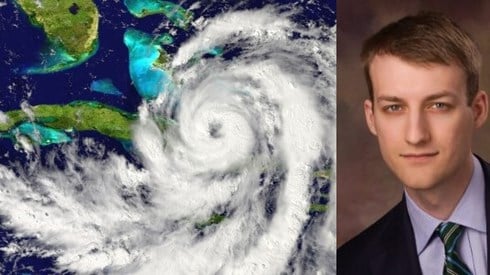Collateralized Reinsurer, Prospero Re Ltd., Assigned "A" Rating by KBRA

February 25, 2020

Kroll Bond Rating Agency (KBRA) recently assigned an insurance financial strength rating (IFSR) of A to Prospero Re Ltd. Prospero Re is a Bermuda Class 3A licensed reinsurer registered as a segregated accounts company and wholly owned by ILS Capital Management Ltd. Prospero Re is utilized in the provision of fully collateralized reinsurance protection for ILS Capital's institutional fund, the 1609 Fund Ltd. The outlook for the rating is stable.
The rating reflects Prospero Re's sound capitalization, seasoned management team, and collateralized reinsurance structure. Prospero Re was incorporated in late 2013 and offers both catastrophe and noncatastrophe reinsurance coverage to a wide range of insurance and reinsurance companies across the globe, predominantly in the United States, Europe, the United Kingdom, Canada, Japan, and Australia. Business assumed includes property, marine, and offshore energy, as well as aviation and other sectors within the reinsurance market. In order to address concerns about the opportunity cost of collateral trapped by the catastrophe events of 2017 and 2018, the company is planning to restructure its operating model so that it retains the benefits of the collateralized reinsurance model while adding an element of leverage that is more reflective of traditional reinsurers.
Collateralized reinsurance typically refers to reinsurance contracts that are fully collateralized by investors or third-party capital providers. The capital from the investors plus the premium from the ceding company equals the contract limit dollar for dollar. Under Prospero Re's revised operating model, reinsurance contracts are to be collateralized by investors to a 1-in-500-year event. The remaining investor funds will be used to assume additional business, creating moderate underwriting leverage, and to support the tail risk of the collateralized reinsurance contracts to slightly more than a 1-in-1000-year event. Prospero Re's new operating model will bring even greater diversification as additional types of risk are added to the portfolio. Moreover, Prospero Re has a lean but seasoned management team with nearly 300 years of accumulated experience in re/insurance and investment management.
Balancing these strengths are Prospero Re's execution risk, model risk, and limited market position. The proposed business plan has yet to be approved by the Bermuda Monetary Authority (BMA); Prospero Re's current license prohibits the company from implementing this new plan until approval is granted. Additionally, full market acceptance by both investors and ceding companies is undetermined at this time.
KBRA noted that the BMA is generally receptive to new, innovative ideas; however, the timing may be inopportune as collateralized reinsurance is currently out of favor among investors. KBRA also noted that while a reduction in collateral may on the surface seem unattractive to ceding companies, it still provides enhanced counterparty credit over traditional reinsurance terms and conditions. Further, Prospero Re is exposed to model risk, both from commercially available catastrophe modeling software used in pricing catastrophe covers and from its own proprietary risk management system. KBRA noted that Prospero Re is a small competitor in a large market dominated by well-capitalized companies with established franchises, some of whom have a significant presence in the alternative capital market.
KBRA said the stable outlook reflects its expectation that the BMA will approve Prospero Re's revised business plan as presented to KBRA. Additionally, KBRA expects Prospero Re to maintain sound capitalization and retain its management team while balancing various stakeholder expectations so the company can maintain a Bermuda Solvency Capital Requirement (enhanced capital requirement) ratio within its target range over the medium term.
A.M. Best on Collateralized Reinsurance
In September of 2019, A.M. Best reported that despite considerable investor losses from the 2017–2018 catastrophe events, the collateralized reinsurance market remained one of the fastest-growing segments of the insurance-linked securities (ILS) industry.
At the time, A.M. Best reported that growth in the collateralized reinsurance market was propelled by ILS funds seeking to provide tailored coverage for ceding companies and coverage for risks that may not be suited for or available from other ILS instruments. At year-end 2018, the market capitalization of the collateralized reinsurance market was approximately $56 billion, out of an approximately $95 billion ILS market.
The catastrophe events of 2017–2018 highlighted the issue of trapped collateral in the collateralized reinsurance market, according to A.M. Best. While the industry experienced difficulty in determining the ultimate loss amount on catastrophe events, as loss estimates changed over time, investors' collateral remained tied up and could not be released until risk-bearing entities' obligations were satisfied. This creates a significant drag on the results of collateralized reinsurance transactions owing to the opportunity cost of investors' collateral tied-up in expired contracts. The drag on investment returns from locked-up collateral can run as high as 20 percent, according to A.M. Best. As a result, the impact of trapped capital is becoming a more important consideration in the risk pricing of collateralized reinsurance contracts.
A.M. Best noted that reduced fronting capacity may create new opportunities for other entities to enter the collateralized reinsurance market. When fronting companies are involved, the collateralized reinsurance cover is transformed into a traditional reinsurance program, meaning that the ceding company relies on the fronting insurer's claims-paying resources and thus is dependent on the credit risk of the fronting company. However, uncertainty can limit the ability of ILS fund managers to engage in fronting arrangements, creating the need for them to find other re/insurers to provide fronting services or seek alternative solutions.
Given that ceding companies are generally exposed to the tail risk associated with collateralized reinsurance programs, the growth in volume and value of these transactions undoubtedly creates collateral and credit risks, according to A.M. Best. The rating agency said that collateral and credit risk issues have the potential for creating systemic risk owing to major catastrophic losses or potential financial market distress. A.M. Best said it anticipates further regulation in these markets as recourse is usually limited to funds that have been allocated in trust accounts.
Copyright © 2019 A.M. Best Company, Inc. and/or its affiliates ALL RIGHTS RESERVED
February 25, 2020


